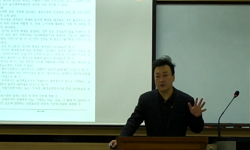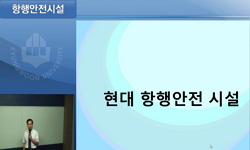Siseol is a procedure of being taken to Ogugut, Gyeongsangbuk-do, and refers to the whining of the deceased in accordance with the rhythm of the Siseol bond. In Ogu-gut, Gyeongsangbuk-do, Siseol are performed by Golmaegi-gut, Ancestral-gut, Chomangja-...
http://chineseinput.net/에서 pinyin(병음)방식으로 중국어를 변환할 수 있습니다.
변환된 중국어를 복사하여 사용하시면 됩니다.
- 中文 을 입력하시려면 zhongwen을 입력하시고 space를누르시면됩니다.
- 北京 을 입력하시려면 beijing을 입력하시고 space를 누르시면 됩니다.

동해안오구굿의 시설 연구 - 경북지역 오구굿을 중심으로 = Siseol study of Ogugut on the East Coast - Focused on Ogugut in Gyeongbuk area
한글로보기https://www.riss.kr/link?id=A108739723
-
저자
마소연 (울산대학교)

- 발행기관
- 학술지명
- 권호사항
-
발행연도
2023
-
작성언어
Korean
-
주제어
시설 ; 오구굿 ; 경상북도 ; 망자 ; 감정적 자아 ; 사회적 결속 ; 해원 ; Siseol ; Ogugut ; Gyeongsangbuk-do ; soul ; emotional ego ; community solidarity ; Haewon
-
등재정보
KCI등재
-
자료형태
학술저널
-
수록면
129-162(34쪽)
- DOI식별코드
- 제공처
- 소장기관
-
0
상세조회 -
0
다운로드
부가정보
다국어 초록 (Multilingual Abstract)
Siseol is a procedure of being taken to Ogugut, Gyeongsangbuk-do, and refers to the whining of the deceased in accordance with the rhythm of the Siseol bond. In Ogu-gut, Gyeongsangbuk-do, Siseol are performed by Golmaegi-gut, Ancestral-gut, Chomangja-gut, Balwon-gut, Notdong-woo-gut, Neoggil-gum, lantern song. The reason why Siseol is repeated in other gut streets except for Chomangjagut, where the deceased is the main character, is that Siseol account for an important proportion of Ogugut.
Siseol that appear with the word “soul” are usually filled with resentment, sadness, and gratitude for their families. Siseol is the whining of the deceased, but when the facility begins to be taken away, the whining becomes a solvent that triggers a conversation between the deceased and the family. Ogugut is a faith and ritual that relieves the resentment of the dead and ascends to paradise. Since "Han" is formed based on relationships, interaction is bound to be premised, so both the deceased and the family are accompanied by mutual expression of emotions.
Ogugut wants to achieve community solidarity with Haewon, which becomes possible through the expression of emotions through Siseol. The family, who became aware of the ‘emotional ego’ based on emotions, checks the process of the change of the deceased based on emotions from then on. The basic formula of ‘expression of negative emotions → weakening of negative emotions → generating positive emotions’ appears in Siseol.
The reason why shaman especially focuses on emotions such as sorrow and sadness in the first half of Gut is that the emotions tend to be dealt with for a very long time and the spread is also strong, so it has a large personal and social impact. However, repeating Siseol, the deceased and the bereaved families have a friendly feeling of trust. The main characteristic of trust is that the object of other emotions is individual others, while the object of trust is the future. Whether it is a negative trust that may cause harm or a positive trust that will bring blessings, trust is all a feeling that gives confidence in the future world. Through the proposal of Ogugut, shaman creates a trust relationship, a positive future promise, to resolve the negative emotions of the deceased and the bereaved family, especially through a device called Siseol.
국문 초록 (Abstract)
시설은 경상북도 오구굿에서 연행되는 절차로, 시설채 장단에 맞추어 망자가 쏟아내는 넋두리를 말한다. 경북오구굿에서 시설이 연행되는 제차는 골매기굿, 조상굿, 초망자굿, 발원굿, 놋동...
시설은 경상북도 오구굿에서 연행되는 절차로, 시설채 장단에 맞추어 망자가 쏟아내는 넋두리를 말한다. 경북오구굿에서 시설이 연행되는 제차는 골매기굿, 조상굿, 초망자굿, 발원굿, 놋동우굿, 넋일굼, 등노래이다. 망자가 주인공인 초망자굿을 제외한 다른 굿거리에서도 시설이 반복되는 것은 오구굿에서 시설이 중요한 비중을 차지하기 때문이다.
‘영혼아’라는 호명에 이어 나타나는 시설은 대개 한이나 안타까움, 가족에 대한 고마움이 주를 이룬다. 시설은 망자의 넋두리이지만 시설이 연행되기 시작하면 그 넋두리는 망자와 가족의 대화를 촉발시키는 용매가 된다. 오구굿은 망자의 한을 풀고 극락으로 천도시키는 신앙이자 의례이다. ‘한’은 관계를 기반으로 형성되는 것이므로 반드시 상호작용이 전제될 수밖에 없으므로 망자와 가족 모두 상호 간의 감정 표출이 동반되는 것이다.
오구굿은 해원과 공동체 결속을 이루어내고자 하는데 그것은 시설을 통한 감정의 표출로 가능해진다. 감정을 바탕으로 ‘감정적 자아’인 망자를 인식하게 된 가족은 그때부터 망자의 변화 과정을 역시 감정의 변화를 바탕으로 확인한다. 그래서 망자의 천도 의지를 확인할 수 있도록 시설에서는 망자의 ‘부정적 감정의 표출 → 부정적 감정 약화 → 긍정적 감정 생성’이라는 기본 공식이 나타나는 것이다.
무당이 특히 굿의 전반부에서 한과 슬픔 등 비애라는 감정에 집중하는 이유는 그 감정이 매우 장기간 대처해야 하는 경향이 있고 확산성 또한 강한 감정이므로 개인적, 사회적으로 미치는 영향이 크기 때문이다. 그렇지만 시설을 반복하며 망자와 유가족은 신뢰라는 우호적인 감정을 가지게 된다. 신뢰의 가장 주요한 특징은 다른 감정들의 대상이 개별적인 타인들인데 반해 신뢰의 대상은 미래라는 것이다. 해를 끼칠지도 모른다는 부정적 신뢰이든 복을 가져다줄 것이라는 긍정적 신뢰이든 신뢰는 모두 미래의 세계에 대한 확신감을 주는 감정이기 때문이다. 무당은 오구굿이라는 제의를 통해, 특히 시설이라는 장치를 통해 망자와 유가족의 부정적 감정을 해소하고자 긍정적인 미래의 약속인 신뢰 관계를 서로 맺게 한다.
오구굿은 집단적(사회적) 한을 풀기 위해 치러지는 경우도 있는데 대표적인 사례가 ‘정신대해원상생대동굿’이다. 이를 연행한 무당은 시설을 통해 집단적 슬픔이나 한을 잠시나마 해소하고 우리가 동일한 고통 속에 놓인 공동체임을 확인할 수 있도록 하였다. 이는 제주도의 ‘질치기’ 의례를 할 때 연행되는 시설과 유사한 영게울림에서 제주4.3 사건과 관련한 집단적 고통이나 슬픔을 읽을 수 있는 것처럼 영혼(망자)의 해원과 천도를 목적으로 하는 굿들은 개인, 가족, 사회의 부정적 감정을 치유할 수 있도록 고안된 장치들을 가진다. 동해안오구굿에서는 그 장치가 시설이 된다.
동일학술지(권/호) 다른 논문
-
- 한국문학회
- 김희진
- 2023
- KCI등재
-
『현씨양웅쌍린기』에 나타난 웃음의 이면 - 여성 보조인물들을 중심으로
- 한국문학회
- 전기화
- 2023
- KCI등재
-
2022년 개정 교육과정 국어과 ‘내용 체계’의 변화와 현대소설 교육의 과제 - 환경·생태 위기와 다문화·소수자 문제를 중심으로
- 한국문학회
- 김명훈
- 2023
- KCI등재
-
- 한국문학회
- 정민경
- 2023
- KCI등재




 KCI
KCI 스콜라
스콜라







